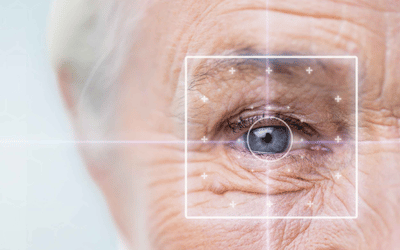Every year, approximately 400,000 people in Turkey undergo cataract surgery. Particularly common in those over the age of 60, the progression of this disease leads to a decrease in vision. According to statistics from the World Health Organization, 285 million people worldwide suffer from vision impairments, 80% of which are treatable. Of these vision impairments, 51% are due to cataracts. It is estimated that by 2020, 54 million people over the age of 60 will lose their vision due to cataracts. Kudret Eye Istanbul’s Chief Physician, Dr. Nail Sönmez, sheds light on the most frequently asked questions about cataracts, a condition prevalent among those over 60.
Cataracts Are Most Common in People Over 60!
Dr. Nail Sönmez, Chief Physician at Kudret Eye Istanbul, explains: “A cataract is the clouding of the eye's natural lens, resulting in blurred vision. It is primarily an age-related condition, but it can also occur in people with diabetes, long-term corticosteroid users, those with a family history of cataracts, agricultural workers who are exposed to the sun for extended periods, and even in newborns. Eye injuries, previous surgeries, and intraocular inflammations can also lead to cataracts. The incidence of cataracts increases with age. It affects about 15-20% of people in their 60s, 30-40% of those aged 65-74, and over 50% of those above 75. Cataracts do not develop suddenly but progress slowly over time. They can occur in both eyes simultaneously or in one eye first and then the other. Common symptoms include difficulty reading, blurred distance vision, clouded vision, sensitivity to light, double vision, yellowing and dulling of colours, and reduced contrast. Patients often complain of a foggy or cloudy appearance, as if looking through a frosted window.”
Say Goodbye to Cataracts and Glasses at the Same Time!
Dr. Nail Sönmez highlights that surgery is the only treatment for cataracts and discusses the ease provided by modern surgical techniques: “Cataracts cannot be treated with medication or glasses; surgery is the only option. The procedure is performed under local anaesthesia with eye drops, without the need for general anaesthesia. The cloudy natural lens is replaced with an intraocular lens suited to the eye's natural structure. The surgery takes about 15-20 minutes, and patients can go home the same day. Lenses that provide both near and distance vision are used in cataract treatments, allowing simultaneous correction of myopia, hypermetropia, astigmatism, and presbyopia. Smart lenses that provide clear vision at intermediate distances are also used. The appropriate lens is chosen based on the eye's structure, the patient's lifestyle, and needs.”
Delayed Cataract Treatment Can Lead to Glaucoma Risk!
Dr. Nail Sönmez warns about the risks of delayed cataract treatment: “If left untreated, cataracts can progress to complete vision loss. Surgery becomes more difficult in advanced cases, and the risk of complications increases. Additionally, severely delayed cataract cases can lead to the development of glaucoma and eye misalignment. Cataracts affect the quality of vision. In cases where the cataract is not progressing and does not pose a risk, immediate treatment is not necessary. It is important to inform the patient about their vision complaints and needs so they can make an informed decision. Although vision loss due to cataracts may be the same, the level of complaint from a patient who needs to drive and perform tasks requiring attention may differ from that of a patient who spends most of their time at home.”
Remember, these blog posts are for informational purposes only. If you have any medical concerns or questions, please consult a doctor.




